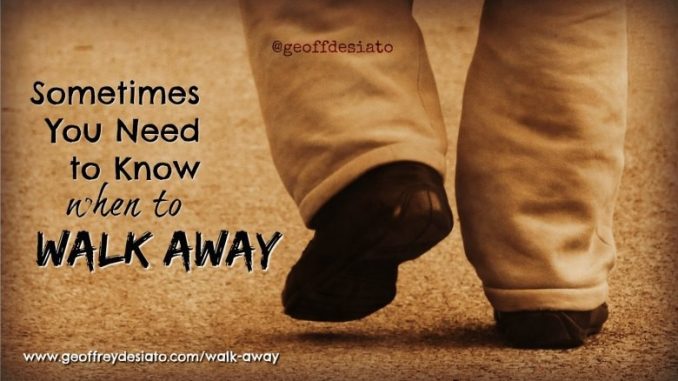
In business, persistence is often celebrated as a virtue. Entrepreneurs are told to push through adversity, to hustle harder, and to never give up. While resilience is undeniably important, there’s another skill that’s equally vital but far less glorified—the ability to walk away. Knowing when to step back from a deal, a partnership, a product, or even an entire venture requires clarity, courage, and a deep understanding of your long-term goals. It’s not about quitting; it’s about choosing wisely where to invest your energy, time, and resources.
Walking away doesn’t always come with dramatic fanfare. Sometimes it’s a quiet decision made after months of reflection, when the numbers no longer add up or the passion has faded. Other times, it’s a sudden realization triggered by a breach of trust or a shift in market dynamics. Regardless of how it unfolds, the moment you recognize that staying the course is doing more harm than good is the moment you begin to reclaim control. It’s easy to get caught in the sunk cost fallacy, convincing yourself that the time and money already spent justify continuing. But business isn’t about honoring past investments—it’s about making smart decisions for the future.
Consider the example of a founder who launched a subscription-based app with high hopes. The initial feedback was promising, but growth plateaued and retention rates dropped. Despite pouring more money into marketing and development, the metrics refused to budge. After a year of trying to pivot and rebrand, the founder made the difficult decision to shut the app down. It wasn’t a failure—it was a strategic retreat. That experience, though painful, freed up resources and mental bandwidth for a new venture that eventually found traction. The lesson here is that walking away can be a form of progress, not defeat.
Sometimes the need to walk away isn’t about the business itself but about the people within it. Partnerships, whether with co-founders, investors, or clients, are built on trust and alignment. When those foundations erode, continuing the relationship can become toxic. A business owner who finds themselves constantly compromising their values to appease a demanding client may eventually realize that the revenue isn’t worth the emotional toll. Ending that relationship might lead to short-term financial strain, but it can also open the door to more fulfilling and sustainable opportunities. In these cases, walking away is an act of self-respect and strategic clarity.
There’s also the question of timing. Walking away too soon can mean missing out on potential breakthroughs, while waiting too long can lead to burnout and deeper losses. The key is to develop a framework for evaluating progress that goes beyond gut feelings. Are your goals still realistic and relevant? Is the market responding in a way that validates your efforts? Are you learning and evolving, or simply repeating the same actions with diminishing returns? Honest answers to these questions can illuminate whether it’s time to persevere or pivot.
Emotions play a significant role in these decisions. Pride, fear, and hope can cloud judgment, making it difficult to see the situation objectively. That’s why it’s important to create space for reflection, seek outside perspectives, and detach your identity from the outcome. A failed product doesn’t mean you’re a failed entrepreneur. A dissolved partnership doesn’t mean you’re difficult to work with. Business is a series of experiments, and not all of them will succeed. What matters is how you respond, what you learn, and how you apply that wisdom moving forward.
Walking away also requires a willingness to embrace uncertainty. Letting go of something familiar—even if it’s not working—can be unsettling. But growth often lies on the other side of discomfort. When you release what’s no longer serving you, you create room for new ideas, new collaborations, and new directions. It’s not about having all the answers; it’s about trusting yourself to find them. That trust is built through experience, reflection, and a commitment to staying true to your values.
In the end, knowing when to walk away is a nuanced skill that blends intuition with analysis. It’s about recognizing that not every opportunity is meant to be pursued indefinitely, and that strategic exits can be just as powerful as bold entries. The business world rewards those who are willing to take risks, but it also honors those who know when to recalibrate. By learning to walk away with grace and intention, you position yourself not as someone who gave up, but as someone who chose wisely. And in that choice lies the potential for deeper fulfillment and lasting success.